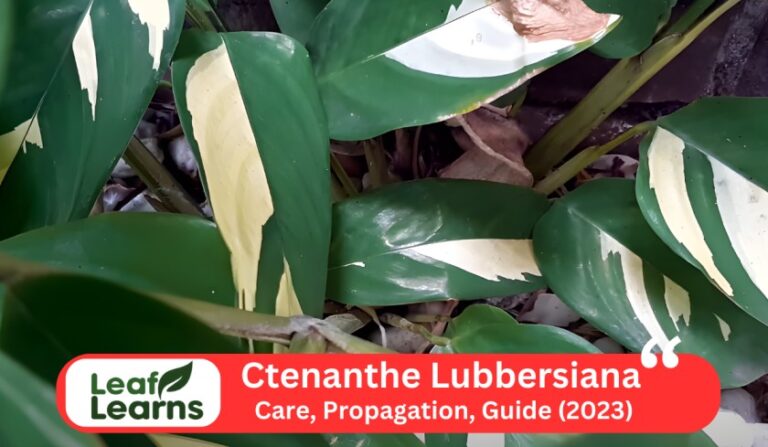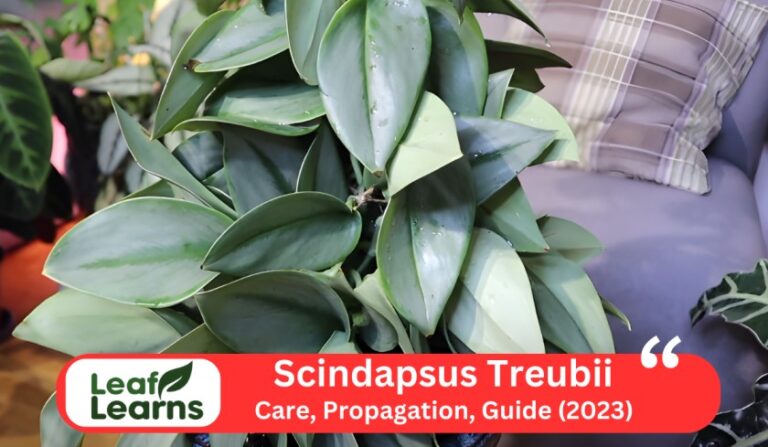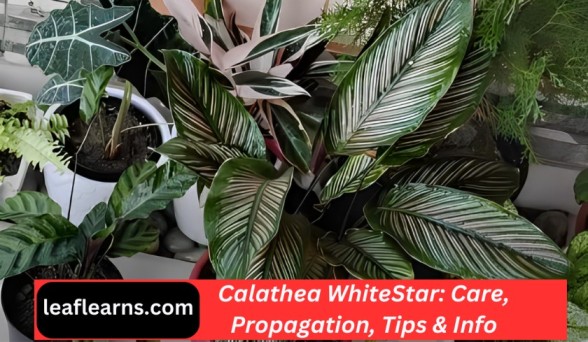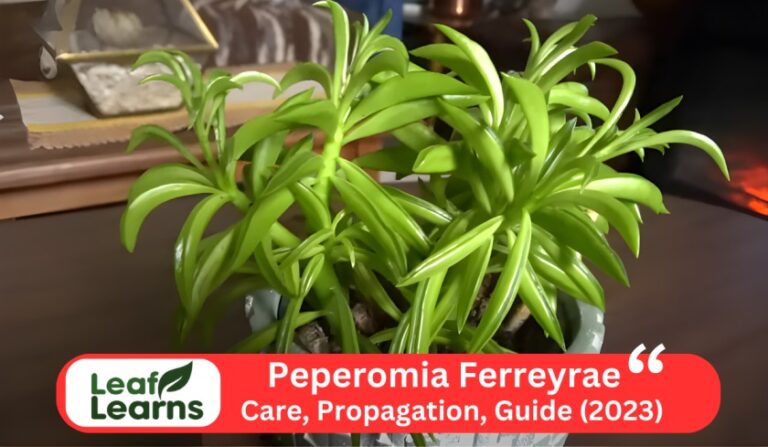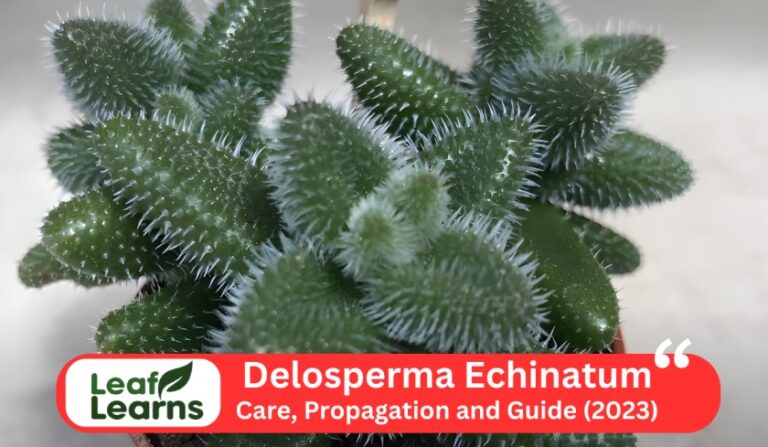Alocasia Macrorrhiza ‘Giant Taro’ Care and Grow (2023)
The Giant Taro, also known as Alocasia macrorrhiza, stands out among tropical foliage with its colossal, elephant-ear-shaped leaves. Known for its edible corms and captivating presence in gardens and homes everywhere, this architectural marvel isn’t just a feast for the eyes.

Your landscaping will be captivated with the grandeur and lasting beauty of the Giant Taro, whether you use it indoors or outdoors.
A vibrant tapestry of tropical rainforests, including Indonesia, Malaysia, the Philippines, New Guinea, and Queensland in Australia, are home to Elephant Ears, including those of Maritime Southeast Asia.
Dappled sunlight filters through dense forest canopy in its natural habitat due to warm temperatures, ample rainfall, and dappled sunlight.
| Common Name | Giant taro, giant alocasia, giant elephant’s ear |
| Scientific Name | Alocasia macrorrhizos |
| Family | Araceae |
| Origin | Southeast Asia, Australia |
| Plant Type | Perennial, Herbaceous |
| Size | 3 to 6 feet in height, spreading canopy |
| Lifespan | Perennial |
| Leaf Colour | Green, Variegated |
| Leaf Size | Large, Arrow-shaped |
| Flower | Infrequent, inconspicuous, not a significant feature |
| Light | Bright, indirect sunlight |
| Water | Regular, well-draining soil, evenly moist |
| Soil | Well-draining, rich in organic matter |
| Temperature | 65°F to 80°F (18°C to 27°C) |
| Humidity | High humidity preferred |
| USDA Zone | 9 to 11 |
| Fertilizer | Balanced liquid fertilizer during growing season |
| Propagation | Division, offsets, or stem cuttings |
| Pruning | Remove damaged or yellowing leaves |
| Pests | Aphids, mealybugs, spider mites |
| Toxicity | Contains oxalate crystals; toxic if ingested |
| Uses | Ornamental plants, indoor or tropical gardens, Medicinal Uses |
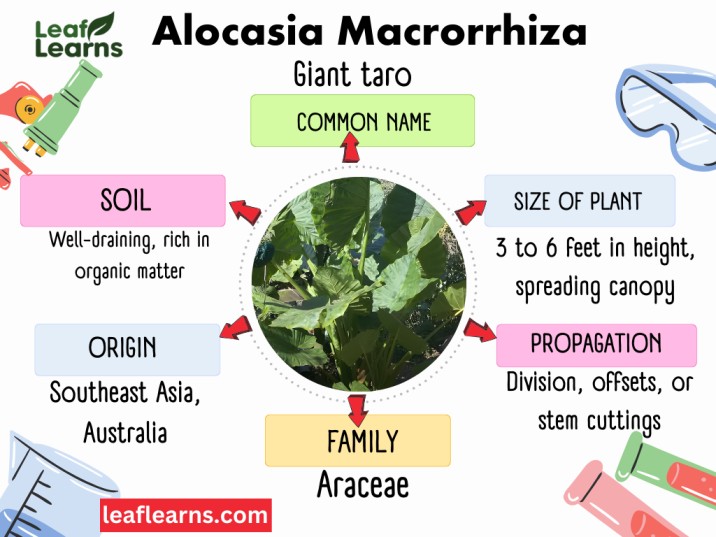
History
A fascinating history surrounds the Elephant Ear. There is evidence that it was domesticated in the Philippines around 3,000 years ago, but its exact origin remains a mystery.
After that, its popularity soared, and it began to grace the gardens and culinary traditions of numerous islands across the Pacific.
The Elephant Ear thrives not only in its native region, but also in tropical and subtropical regions all over the world, enchanting hearts with its exotic beauty.
Unique Aspects
There is a special place in many cultures for this magnificent plant. Many traditional garments, shelters, and even food are made from its massive leaves. Others view Elephant Ear as a symbol of abundance and prosperity because of its medicinal properties.
Contents
- 1 What’s Unique About Alocasia-Macrorrhiza?
- 2 Top Care Tips
- 3 Care for Alocasia Macrorrhiza
- 4 How to Propagating Alocasia Macrorrhiza
- 5 Pruning and Repotting
- 6 How to Get Alocasia-Macrorrhiza to Bloom
- 7 Growth Rate and Size
- 8 Foliage
- 9 Flowering
- 10 Appearance and Fragrance
- 11 Underwatering And Overwatering
- 12 Overwintering
- 13 Common Pests and Diseases
- 14 Problems and Solutions
- 15 Toxicity
- 16 Varieties/Types
- 17 Uses
- 18 Purchasing and Availability
- 19 Plant Purchase and Care
- 20 Naming and Identification, General Information
- 21 Conclusion
- 22 FAQs
What’s Unique About Alocasia-Macrorrhiza?
This tropical beauty is truly unique for these reasons:
Eye-catching shapes: The elephant-ear-shaped leaves make this plant stand out. But did you know that there is more to it? Stingray varieties have leaves shaped like their namesakes, adding a touch of aquatic beauty.
The Giant Taros striking variegation is a testament to nature’s artistry. An enchanting display would be created if emerald green leaves were splashed with white or gold to create a mesmerizing display.
Tropical Appeal: You can bring the tropics into your living room with these plants. A lush, exotic statement can be added to your decor instantly with their lush foliage.
Edible Surprise: Not just a visual treat, this beauty is also delicious. A delicious and nutritious food source is the “Giant Taro” variety that is cultivated in some regions.
Relatively low maintenance: Despite their grandeur, Giant Taro plants are easy to take care of. You can enjoy them for years to come if you take good care of them indoors.
Top Care Tips
- Ensure that the leaves of this plant receive bright, indirect light in order to avoid scorching.
- A well-draining potting mix should be used, and the top inch of soil should be watered thoroughly when it dries out.
- Humidity levels of 50-60% are ideal.
- Keeping temperatures between 65 and 85°F (18 and 30°C) is ideal.
- Once a month during the growing season, apply a balanced liquid fertilizer.
Care for Alocasia Macrorrhiza
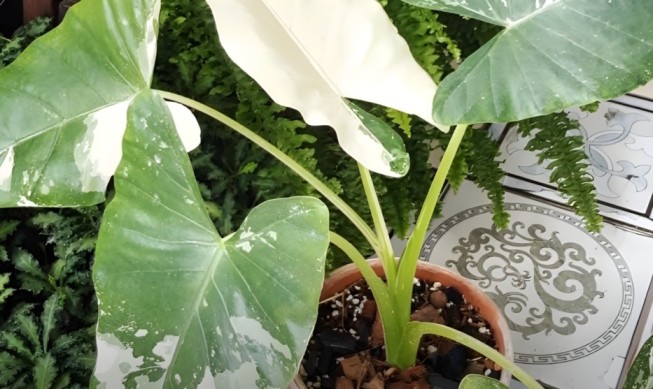
Light Requirement
Just like us, plants need the right kind of light to thrive. For the Elephant Ear, bright, indirect light is key.
Seasonal Shifts
- The sun in the morning or the filtered light of the afternoon is best in the summer. To prevent scorching of leaves during the midday sun, keep the leaves out of harsh midday sun.
- In winter, grow lamps provide additional light to prevent leggy stems and maintain growth.
- During the spring and fall, gradually increase the brightness of the light as the days lengthen.
Height Matters
There may be a need for more light to reach the entire foliage of taller Giant Taro plants. Ensure even growth by rotating the pot on a regular basis.
Signs of Light Trouble
- The leaves are pale because there isn’t enough light. Provide a brighter light source for the plant.
- Overexposure to direct sunlight causes scorched leaves. Provide shade for the plant or move it further away from the window.
Water Requirements
Moisture is essential for tthis type of plant like a giant elephant ear that needs a daily bath. Water demands vary according to the season, just like those of any finicky friend.
Watering Schedule
- The hot months of summer will leave your Alocasia thirsty for a cool drink! Deeply water when the soil feels dry in the top 1-2 inches. Depending on the size and temperature of your pot, you may need to water it 2-3 times a week.
- You will notice your Alocasia going into semi-dormancy as the days become shorter and the temperatures drop in the winter. During the growing season, water the soil once every 7-10 days, allowing the top 3-4 inches to dry completely between waterings.
- Winter & Fall: Water moderately during these transitional seasons. The soil in the top 2 inches of your Alocasia should be allowed to dry out between waterings once a week.
Soil Requirement
This plant thrives in moist and well-draining soil, also known as “Elephant Ear.”. Take care of your plant all year round by following these steps:
Water your Alocasia more often during the summer’s warmer months, when it might grow taller. It is important to maintain a consistent moisture level in the soil without letting it become soggy. Perlite and peat moss should be used in a potting mix for optimal drainage.
In winter, watering frequency should be reduced as growth slows. Water only when the soil tops 2 inches deep has dried out. When it gets cold, you can use coir-based potting mix to keep the soil moist.
Water your Alocasia moderately during spring and fall, when it experiences moderate growth. You should aim to keep the soil slightly moist, but not dripping wet. Drainage and aeration are enhanced by a balanced blend of peat moss, perlite, and orchid bark.
Alocasia Macrorrhiza can reach a height of 12 feet under ideal conditions.
Temperature Requirement
Summer Sunshine
- Temperatures between 75°F and 85°F (24°C and 29°C) are ideal.
- Leaves should not be exposed to direct sunlight or excessive heat, which can cause them to scorch.
- Make sure your plant gets fresh air by moving it outside to a shady patio or balcony.
Autumnal Comfort
- Temperatures should be between 65°F and 75°F (18°C and 24°C)
- The plant will go dormant as watering and fertilizing are reduced gradually.
- You should avoid cold nights and drafts, which can damage your leaves.
Winter Slumber
- Minimum temperature: 55 degrees Fahrenheit (13 degrees Celsius)
- The first frost should be avoided by bringing your Alocasia inside.
- You may notice some leaf loss during this time, but don’t worry, the plant will grow back in spring!
Spring Awakening
- Temperatures between 60°F and 70°F (16°C and 21°C) are ideal
- As soon as the plant wakes up from its slumber, resume regular watering and fertilizing.
- Its vibrant beauty will return with the emergence of new leaves.
Height Matters
- Plants that grow indoors typically reach a height of 2-4 feet.
- With proper care, your this plant can grow to 5-8 feet high!
Humidity Requirement
With its lush, humid environment, the Giant Taro thrives.Each season requires a different level of humidity:
It’s summertime, so aim for a humidity level of 60-80% during the summer months. Plants thrive in this type of habitat because it mimics their native tropical rainforest habitat.
It is ideal to maintain a humidity range of 50-60% in winter as temperatures drop. A strategically placed pebble tray or occasional misting can help maintain a comfortable humidity level for your plants despite your home heating system lowering it.
Spring brings renewal, and fall brings transformation: Spring and fall are moderate transitions between summer and winter. The humidity level in your home should be 50-70% during these seasons, adjusted based on the natural humidity levels in your home and the response of your Alocasia.
As taller plants have a larger surface area to lose moisture through transpiration, they may need a slightly higher humidity level.
Fertilizer Requirement
- Alocasia’s active growth periods are spring and summer, so they need a steady supply of nutrients. Every two weeks, make sure its massive leaves receive a diluted, balanced liquid fertilizer.
- During the fall and winter, fertilizer should be reduced as growth slows. You can give your plant a break by using half-strength solutions once a month or even stopping entirely. Roots can be damaged by overfertilization.
- Tall Tales: Make sure you take note of the height of your Giant Taro. It may be necessary to fertilize taller plants more frequently or more concentratedly in order to keep their size and color vibrant.
A Balanced Diet
The NPK ratio of fertilizers should be 10-10-10 or 5-5-5 for optimal growth. For healthy foliage and strong roots, nitrogen, phosphorus, and potassium are essential nutrients.
Potting Requirement
Clay pots are ideal during the hottest months of the year. A clay root system is kept cool by its porous nature, which prevents moisture buildup.
Winter: If you live in a colder climate, consider buying a glazed ceramic or plastic pot. The roots are protected from the chill by these materials, which retain more heat.
There is a happy medium between spring and fall. If you want to avoid overwatering, use terracotta pots with good drainage.
Growing taller will require you to repot your Alocasia plant into a larger pot with good drainage. Try to get a wider pot than the last one by about 2-3 inches.
How to Propagating Alocasia Macrorrhiza
Here’s your ultimate guide to multiplying your beloved Alocasia plant:
Step 1: Choose Your Method
There are two main ways to propagate this plant:
- Dividing the rhizome: This method works best for mature plants with well-developed rhizomes (underground stems).
- Separating offsets: Smaller plants often produce “pups” or offsets around the base. These can be gently separated and grown into individual plants.
Step 2: Gather Your Supplies
- Sharp, sterilized knife or pruning shears
- Potting mix
- Pots with drainage holes
- Water
- Optional: Fungicide
Step 3: Get Ready for Action
- Make sure you carefully remove your Alocasia-Macrorrhiza from its pot.
- It is important to locate the “eyes” (small bumps) of the rhizome when you divide it.
- Make sure each piece of the rhizome has one or more eyes by cutting it with a sterilized knife.
- To separate offsets from their mothers, gently wiggle them away while maintaining their roots.
Step 4: Planting the Babies
- Make sure the potting mix you use is well-draining.
- The eye of each rhizome section should face upward when planting.
- The pup should be placed in a pot and soil should be added to the pot for offset plants.
- Make sure the soil is thoroughly watered and that excess water drains away.
Step 5: Nurturing the Newborns
- Make sure your newly propagated Alocasias have bright, indirect light and are in a warm, humid location.
- Don’t let the soil become soggy, but keep it moist.
- If you want to increase the humidity of the leaves, you can mist them regularly.
- You can begin fertilizing the plants with a balanced liquid fertilizer once they’ve established themselves (usually in a few months).
Pruning and Repotting
Pruning
Why prune?
- The size of the plants can be controlled through regular pruning, particularly if there is a limited amount of space available.
- Remove older leaves to encourage new foliage: Removing old leaves allows the plant to concentrate its energy on producing healthy, new leaves.
- You can reduce the incidence of fungal diseases by improving air circulation around the plant by removing dead or dying leaves.
When to prune?
- Your Alocasia will quickly recover from pruning in spring and summer since this is the active growth period.
- Whenever leaves turn yellow, brown, or tear, they should be pruned.
How to prune
- To prevent bacterial and fungal spread, sterilize your tools.
- The cut should be made at the base of the leaf stalk using clean, sharp pruning shears.
- Plants should not be pruned too much at once: Only remove 1-2 leaves at a time to avoid stressing them.
Repotting
Why repot?
- An Alocasia’s pot will need to be replaced with a larger one as it matures.
- The soil is replenished with fresh nutrients when repotted.
- Growth is hindered by crowded roots and pot-bound pots over time. When roots are repotted, more nutrients can be accessed by them.
When to repot?
- Plants are actively growing in the spring, so repotting is an ideal time.
- A plant that is outgrowing its pot will have roots emerging from the drainage holes or will appear top-heavy.
How to repot:
- Choosing a slightly larger pot: Pick a pot that has a diameter that is about 1-2 inches greater than the one you currently have.
- Alocasias require a potting mix that drains well. Fill the new pot with a mix designed specifically for them.
- If excess potting mix remains on the roots, remove it carefully.
- The new pot should be filled with fresh potting mix after the plant is placed in the center of it.
- Ensure that the soil is settled and any air pockets are removed by watering generously.

How to Get Alocasia-Macrorrhiza to Bloom
This plants can bloom only when they are mature, several years old, and have adequate growth.
Create a tropical environment by providing warm temperatures (around 70°F) and high humidity levels (50-60%). If you want to increase humidity around your plant, consider using a humidifier or grouping it with others.
Make sure there is plenty of bright, indirect light. Keeping the leaves out of direct sunlight can prevent them from scorching.
Dilution of liquid fertilizer to half strength is a key component of feeding for success in spring and summer.
Patience is the key: Flowering may take several years and may be unpredictable. You may not see blooms right away, but do not be discouraged.
Growth Rate and Size
Be prepared to be amazed at the speed of growth! Within 5-10 years, Alocasasia Macrorrhiza will reach 3 meters (10 feet) and 1.5 meters (5 feet) in height and width, depending on the conditions.
Start small: Don’t let its eventual size intimidate you. Bringing your Alocasia home for the first time will make it much easier for you to manage.
Foliage
- Some varieties display stunning variegation, or deep, glossy green is the signature hue.
- Almost as big as their namesake’s ears, these leaves grow as tall and wide as three feet!
- Some cultivars, such as the “Stingray,” have elongated, fishtail-like leaves that add even more intrigue.
Flowering
- Flowers are not as showy as the foliage, but they are nonetheless charming. Spathes (modified leaves) enclose spadixes (spikes of flowers), which are pale green to cream in color.
- A hood-like structure forms the spathe, enhancing the overall appearance.
- A touch of visual interest can be added by the spathe, which may reach up to 6 inches, while the flowers themselves are small and inconspicuous.
Appearance and Fragrance
In addition to the plant’s beauty, these patterns add a layer of artistry. They range from creamy white to vibrant gold.
Although the Alocasia is visually appealing, its appeal goes beyond that. This plant releases a delightful, sweet fragrance in the late summer months, reminiscent of cucumbers.
This plant makes any indoor space truly unique and unforgettable with its captivating visuals and subtle scent.
Underwatering And Overwatering
Understanding the symptoms of both under and overwatering is crucial in preventing further damage.
Underwatering
- Signs: Wilted leaves, brown leaf edges, stunted growth.
- Causes: Not watering your plants enough, inadequate pot drainage, and improper potting soil.
- Solution: Keep the soil moist when it feels dry on top and 1-2 inches below. Pots with drainage holes and well-draining potting mixes ensure proper drainage.
Overwatering
- Signs: Yellowing leaves, mushy stems, brown spots on leaves, root rot.
- Causes: Too frequent watering, poor drainage, and too large pots.
- Solution: Water the plants less frequently between waterings. Make sure the pot is the right size and has proper drainage. You should repot the plant in fresh soil if root rot is suspected.
Overwintering
When the days shorten, gradually reduce your exposure to light. It is sufficient to have a dimly lit room with indirect lighting.
Keep the soil dry between waterings by watering less frequently. It is possible to cause root rot during dormancy if you overwater.
Make sure your Alocasia is kept between 55 and 65 degrees Fahrenheit (13-18 degrees Celsius). Make sure there are no cold drafts or frost.
Maintain moderate levels of humidity. Pebble trays or humidifiers can be helpful.
When dormancy is in effect, do not fertilize. As soon as your Alocasia begins to show signs of new growth, you should resume your regular feeding schedule.
Common Pests and Diseases
Pests
- Spider mites: Tiny, web-spinning insects that cause leaves to yellow and stipple. Treat with neem oil or insecticidal soap.
- Mealybugs: White fuzzy insects that feed on sap from leaves and stems. To remove them, use insecticidal soap or rubbing alcohol.
- Aphids: A small, green insect that clusters on stems and leaves, stunting plant growth. Water or insecticidal soap can be used to remove them.
Diseases
- Leaf spot: Brown spots on leaves caused by fungus. Using a fungicide and increasing air circulation will help.
- Botrytis: A grey mold that flourishes in humid conditions. Make sure the air circulation is improved by removing the affected leaves.
- Root rot: Mushy roots and yellowing leaves are caused by overwatering. The watering schedule should be adjusted and repotting in well-draining soil should be done.
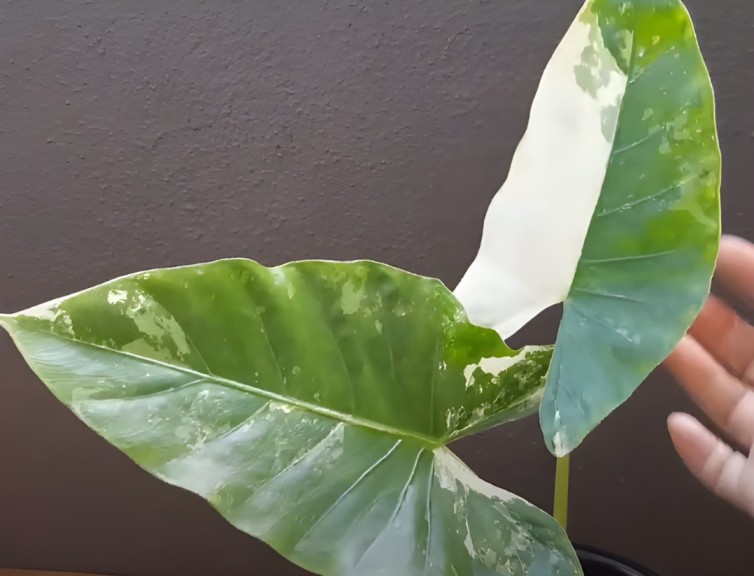
Problems and Solutions
- Problem: Yellowing Leaves
- Solution: Adjust Light Exposure
Overexposure to direct sunlight often causes yellowing leaves. Avoid leaf discoloration by moving your Giant Taro plant to a location with bright, indirect light. - Problem: Drooping Leaves
- Solution: Fine-Tune Watering Routine
- Neither overwatering nor underwatering can lead to drooping leaves. Maintain optimal soil moisture without causing root rot by letting the soil dry slightly between waterings.
- Problem: Not Flowering
- Solution: Provide Proper Care Conditions
- Blooming occurs when Alocasia-Macrorrhiza is satisfied. Light, water, and nutrients must be balanced. It takes time for a happy, healthy plant to mature into a flower. Be patient.
- Problem: Pest Infestation (Commonly Aphids or Spider Mites)
- Solution: Introduce Natural Predators or Neem Oil
- Introducing ladybugs or using neem oil will help you combat pests naturally.
- Problem: Leaves Turning Brown
- Solution: Adjust Humidity Levels
- Leaf edges that are brown indicate low humidity. A tray of water or misting the leaves regularly will increase humidity.
- Problem: Alocasia-Macrorrhiza watering
- Solution: Improve Soil Drainage and Reduce Watering Frequency
- Drain your pots regularly, and use soil that drains well to prevent root rot. Watering schedules should be adjusted to prevent waterlogged conditions.
- Problem: Outgrowing its Pot
- Solution: Repot and Provide Adequate Space
- Alocasia-Macrorrhizas need to be repotted when they become cramped. The soil should be refreshed to accommodate the growing plant and a larger pot should be selected.
- Problem: Curling Leaves
- Solution: Check for Pests and Adjust Humidity
- Low humidity or pests may cause curling leaves. To restore leaf turgidity, inspect the plant for pests and boost humidity if none are present.
- Problem: Developing Brown Spots
- Solution: Monitor Water Quality and Ensure Proper Drainage
- Water quality problems or overwatering can result in brown spots. Keep the soil draining effectively by using distilled or filtered water.
- Problem: Losing Leaves
- Solution: Evaluate Care Routine and Environmental Factors
- The loss of leaves can be caused by stress. Check your plant’s care routine to ensure it gets the right amount of light, water, and nutrients. Creating an optimal growth environment also requires assessing environmental conditions.
Toxicity
Despite its beauty, the Alocasia-Macrorrhiza is toxic and needs to be handled with care. There is a possibility of irritation and discomfort if ingested from this plant as it contains calcium oxalate crystals.
There are generally mild side effects for humans, such as oral irritation, swelling, and digestive problems.
There is a greater danger for pets. In severe cases, cats and dogs can experience vomiting, drooling, difficulty swallowing, and even airway blockages as a result of the plant’s toxic ingredients.
Giant Taro plant should therefore be kept out of reach of children and pets at all times. An ingestion must be closely monitored and treated immediately.
Varieties/Types
- Alocasia-Macrorrhiza-Variegata
- The large, heart-shaped leaves of this variety display striking variegation, with a mesmerizing blend of white and green patterns. There is a high demand for Alocasia-Macrorrhiza Variegata because of its aesthetic appeal.
- Alocasia-Macrorrhiza Aurea
- A golden-yellow hue lends warmth to any indoor or outdoor setting with the Aurea variety. In addition to its ornamental value, it has a vibrant coloration.
- Alocasia-Macrorrhiza Albo Variegata
- A visually captivating display is created by Albo Variegata’s leaves, which are adorned with a contrast of green and white hues. An elegant touch can be added to gardens or indoor spaces with this variety.
- Alocasia-Macrorrhiza Black Stem Variegated
- With its variegated leaves and dark stems, the Black Stem Variegated variety stands out. Those seeking a dramatic and bold presence will love the deep color contrast.
- Alocasia-Macrorrhiza Albino
- Having predominantly white leaves, Albino Alocasia Macrorrhiza is a unique and distinctive variety. As a result of its scarcity, it is highly sought after by collectors.
- Alocasia-Macrorrhiza Camouflage Variegata
- This variety lives up to its name with leaves that resemble natural camouflage patterns. An outdoor landscape is enhanced by the intricate design.
- Alocasia-Macrorrhiza ‘Calidora’
- This dwarf version of Alocasia-Macrorrhiza is better suited to smaller areas. The leaves are large and heart-shaped despite its compact size.
- Alocasia-Macrorrhiza Black
- Its foliage is almost black, giving the Black variety a dramatic presence. A unique coloration contributes to its sophisticated and dramatic appearance.
- Alocasia-Macrorrhiza ‘Borneo Giant’
- ‘Borneo Giant’ is a large variety of AlocasialMacrorrhiza, named after its colossal stature. Gardens are dominated by its grandeur.
- Alocasia-Macrorrhiza ‘Stingray’
- Alocasia-Macrorrhiza ‘Stingray’ variety is distinguished by its distinctive leaf shape that reminds one of a stingray, adding a sense of curiosity to Giant Taro plant varieties.
Uses
Giant Taro variety is a staple food source in many regions, and is a culinary delight. Its leaves and corms are both nutritious and delicious when prepared correctly.
The medicinal properties of Alocasia Macrorrhiza have long been recognized in traditional medicine. They are useful for treating a variety of ailments like skin infections, headaches, and diarrhea due to their antimicrobial, antifungal, and anti-inflammatory properties.
An inspiration for artists:
For centuries, the beauty of the plant has captivated artists. In paintings, sculptures, and even fashion design, its bold forms and vibrant colors have been incorporated.
An eco-warrior is a plant that removes harmful toxins and pollutants from your home naturally. The large leaves of this plant work wonders to filter the air you breathe, making it a healthier and more inviting place to live.
Giant Taro plant shines once again when it comes to biodegradable beauty.
Purchasing and Availability
Local nurseries and plant shops usually carry them, as do online retailers like Amazon and Etsy. A variety of sizes and rarities are available, but you’re sure to find one that fits your budget and adds a touch of tropical charm to your home.
Here are some popular online stores
- Variegated options are available on Amazon.
- Unique and rare varieties are available on Etsy from smaller sellers.
- Featuring an extensive selection of products and international shipping, FloraStore is a European retailer.
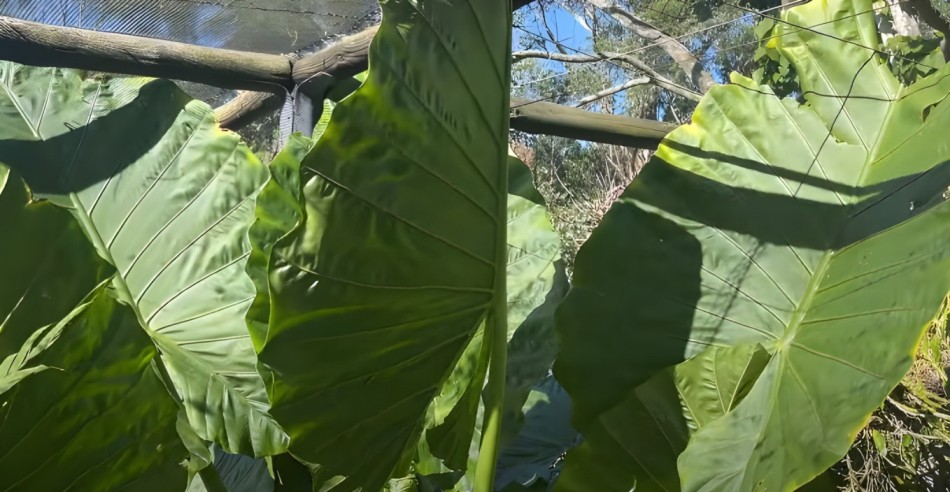
Plant Purchase and Care
If you’re considering adding the striking Alocasia macrorrhiza to your collection, it’s essential to understand both its acquisition and care. The first step is finding a reliable source to purchase this botanical gem.
The process of acheter alocasia-macrorrhiza, or buying Giant Taro plant, might involve exploring local nurseries or online platforms. Keep an eye out for unique varieties like alocasia macrorrhiza variegata, especially the all-white variation, which adds an exquisite touch to your green space.
In countries like Australia, enthusiasts can seek alocasia-macrorrhiza variegata for sale, combining aesthetic appeal with the rarity of this plant. Once you’ve secured your plant, understanding its care is crucial.
This involves considerations such as arrosage (watering), ensuring proper sunlight exposure, and being attentive to signs like hojas amarillas (yellow leaves) that might indicate specific needs. Proper care contributes to the well-being and vibrancy of your plant.
Naming and Identification, General Information
Understanding the botanical details and general characteristics of Alocasia-macrorrhiza is essential for any plant enthusiast. The botanical name of this species is Alocasia macrorrhizos, a plant known for its distinctive characteristics.
While the common name might vary, recognizing its local name can facilitate communication among enthusiasts. Giant Taro plantis part of the broader Araceae family, showcasing its taxonomic connection.
Beyond nomenclature, delve into the general information about this plant, including its characteristics, distribution, and potential variations. Whether you’re fascinated by its dwarf form or intrigued by the dappled or drooping leaves, exploring the diverse facets of Giant Taro plant adds depth to your appreciation of this botanical wonder.
Conclusion
We discover a botanical treasure deep rooted in the vibrant rainforests of Southeast Asia as we journey throughGiant Taro plant’s lush tapestry. Elephant Ear is a magnificent plant with heart-shaped leaves and a rich history that is found in gardens and homes all over the world.
FAQs
Does Alocasia macrorrhiza like sun or shade?
Indirect light is preferable for Allocasia macrorhiza. The leaves of this plant can be scorched by direct sunlight.
What is the use of Alocasia macrorrhiza plant?
Plants such as Aloe macrorrhiza are often grown as ornamentals. Its corms, however, are consumed as food in some regions.
Can you eat Alocasia macrorrhiza?
There are some regions that consume the corms of Alocasia-macrorrhiza. The removal of toxins, however, requires proper preparation.
Is Alocasia poisonous to humans?
There is insoluble calcium oxalates found in every part of this plant, which is poisonous if consumed.
Is Alocasia macrorrhiza indoor plant?
The low light and moderate humidity tolerance of Giant Taro plant make it a great indoor plant.
Is Alocasia macrorrhiza indoor or outdoor?
Warm climates are suitable for growing Allocasia macrorrhiza both indoors and outdoors. Frost and harsh sunlight, however, must be protected from it.
Can alocasia macrorrhiza grow in full sun?
Leaf burn can occur if Giant Taro plant is exposed to full sun for an extended period of time.
Is Alocasia called elephant ears?
The large, heart-shaped leaves of Alocasia plant it known as Elephant Ear.
How fast does Alocasia macrorrhiza grow?
With ideal conditions, Alocasasia macrorhiza can produce several new leaves every month.
How tall does Alocasia macrorrhiza grow?
It can grow to a height of 6-12 feet indoors and even taller outside under optimal conditions.
How to pot Alocasia macrorrhiza?
The pot should have drainage holes and the potting mix should drain well. When watering after potting, let the soil breathe for a few moments before watering again.
Why is my Alocasia macrorrhiza dying?
Overwatering, underwatering, inadequate light, low humidity, and pests or diseases are just some of the factors that can cause Alocasia macrorrhiza to die.
Why is my Alocasia macrorrhiza drooping?
Low humidity, underwatering, or fluctuations in temperature often cause the leaves of Alocasia macrorrhiza to droop.
How cold can Alocasia macrorrhiza tolerate?
Temperatures as low as 50°F (10°C) are tolerated by Alocasia-macrorrhiza, but frost should be avoided.
Is Alocasia macrorrhiza toxic to cats and dogs?
Cats and dogs are toxic to Alocasia macrorhiza. There are a number of serious symptoms that can occur after ingesting any part of the plant.

